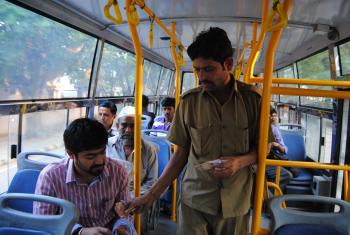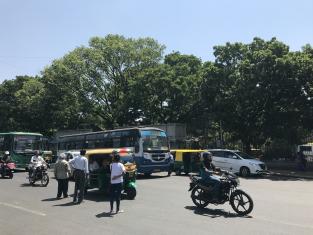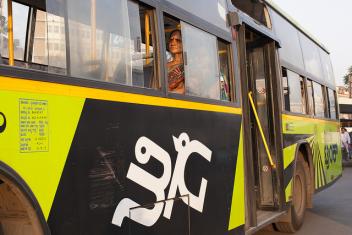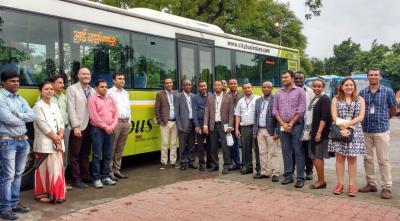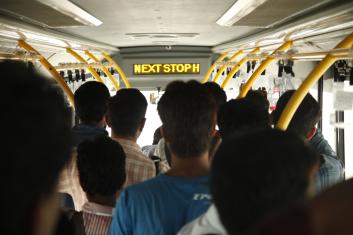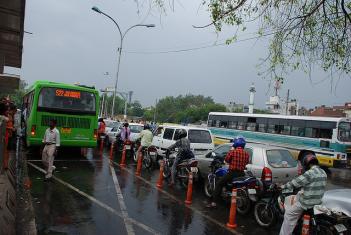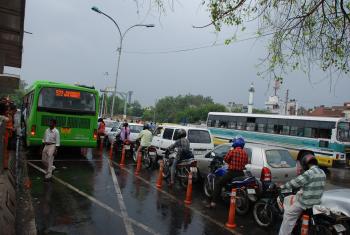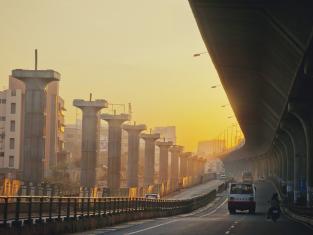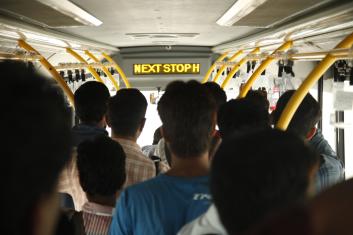Blog Posts: bus rapid transit (BRT)
-
-
Saving lives through investments in public bus systems
by -India suffers from the highest burden of road crashes, contributing to nearly 10% of global road deaths. In just the last decade (2008-2017), road crashes in India have increased by 23%, with an average annual increase of about 2% every year. The problem is particularly acute in urban areas, which witness nearly 42% of all crashes in the...
-
Building a Smooth Road Map for City Bus Systems in India
by -City buses, plying on both long and short distance routes, are the primary mode of transport for majority Indians, with over 25 billion trips recorded in 2014-15. The most vulnerable sections of society depend on buses as one of the cheapest and the most convenient means of commute, in small, medium and metro cities alike. Unfortunately, despite being the backbone of urban mobility, bus penetration in India is dismal. There are 1.29 buses per 1000 people in India, compared to China’s 1.89 and UK’s 2.77, and less than a fifth of Brazil’s 10.3, as of 2009 (Bus Karo 2.0 – Case Studies from...
-
Learnings for Africa from India’s Bus Rapid Transit (BRT) Lab
by -Like many African cities, Addis Ababa, the capital city of Ethiopia, is at the turnstile of urbanisation. Recognising the need to augment the existing inadequate public transport, the authorities are considering implementing a bus rapid transit (BRT) system in the city. In the first week of October, a 13-member high-level delegation from Addis Ababa visited India with the aim of learning from similar projects in Indian cities. The...
-
That Dingy Bus Stop is Hindering India’s Progress - An Economic Case for Safe Public Transport
by and -Women account for 48.5% of the general population of India, but only constitute about 31% of the total work force in the country. You may think that this corresponds with what you know about the status of women in India. But, a deeper look at the trends, would shock you.
Shocking trends
First, as our economy grows, fewer women are joining the workforce. In fact, women’s workforce participation rate fell by almost 12 percentage points in six years (i.e., from...
-
Don’t Miss the Bus, Delhi
by and -This blog originally appeared in The Hindu Business Line
It is good news indeed that the Chief Minister intends to re-launch the BRT in an improved form. Hopefully, the city will use lessons from its mistakes to build better
Contrary to popular belief, the Delhi BRT (bus rapid transit) system was not a complete failure. A study by technical experts WRI India, EMBARQ and CST India found that despite its faults, the system provided better mobility to road users. It...
-
Don’t Miss The Bus
by -This piece originally appeared in The Indian Express
No responsible city government can afford to ignore the benefits of rapid transport. As cities grow, investments are needed to ensure that the majority of citizens can travel safely and rapidly. Bus Rapid Transport (BRT) systems are best placed to solve commuter problems in Indian cities. They take about a tenth of the cost and implementation time of metro systems, and can be easily expanded.
Any new public service must withstand...
-
What will it take to create smart cities in India?
by -This blog post originally appeared on TheCityFix.
In June 2014, the Government of India announced its ambitious plan to build smart cities across the country. This plan will be administered by the Ministry of Urban Development, and will focus on building new smart cities and redeveloping existing urban regions with populations of over 100,000 people. The government announced last...
-
Introducing the Hub: Bringing Connectivity and Collaboration to Indian Cities
This post originally appeared on June 5, 2014.
India is home to one of the fastest growing urban populations in the world. Indian cities are expected to grow from 340 million in 2008 to 590 million people in 2030, and with that growth comes significant challenges for the country’s city planners and leaders.
When it comes to sustainable urban transport and city planning, growing Indian cities lack capacity in crucial areas – policymaking, investment decisions, planning and design, service quality, and more....

